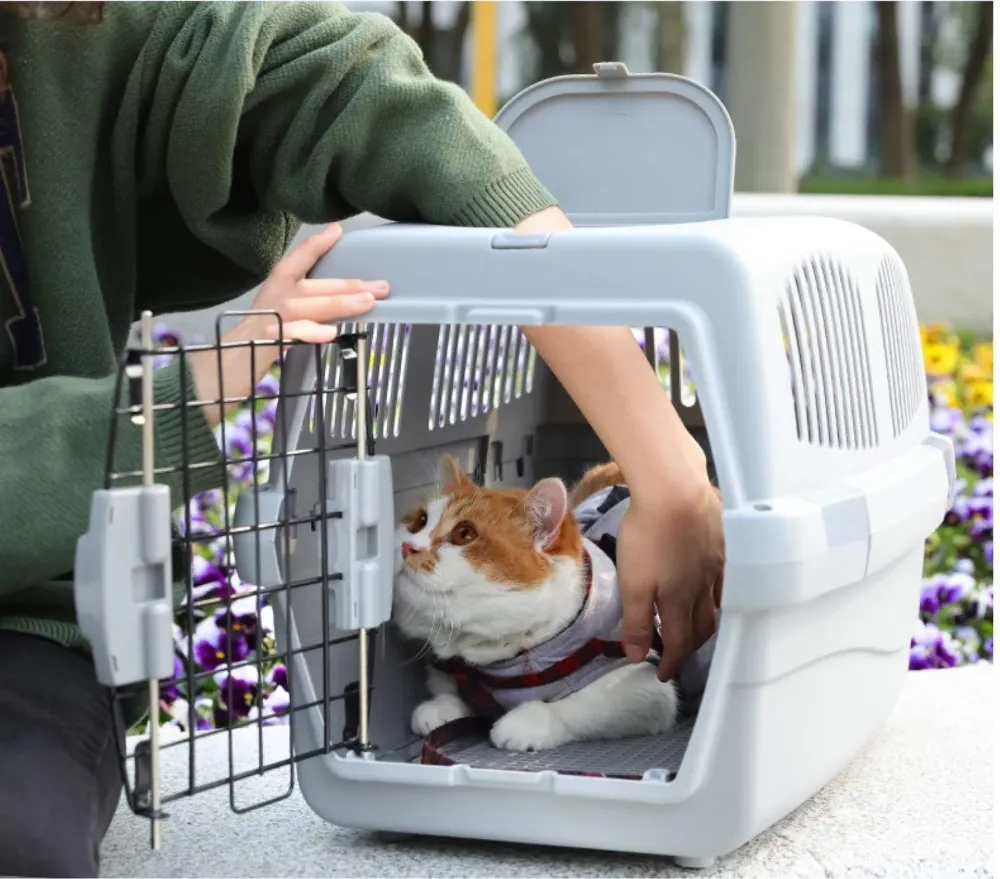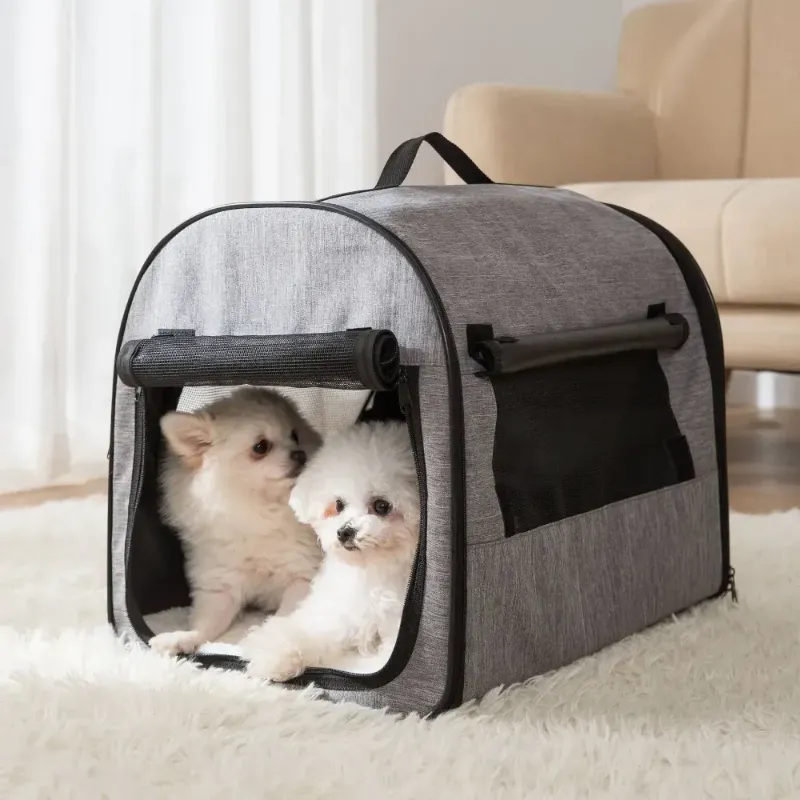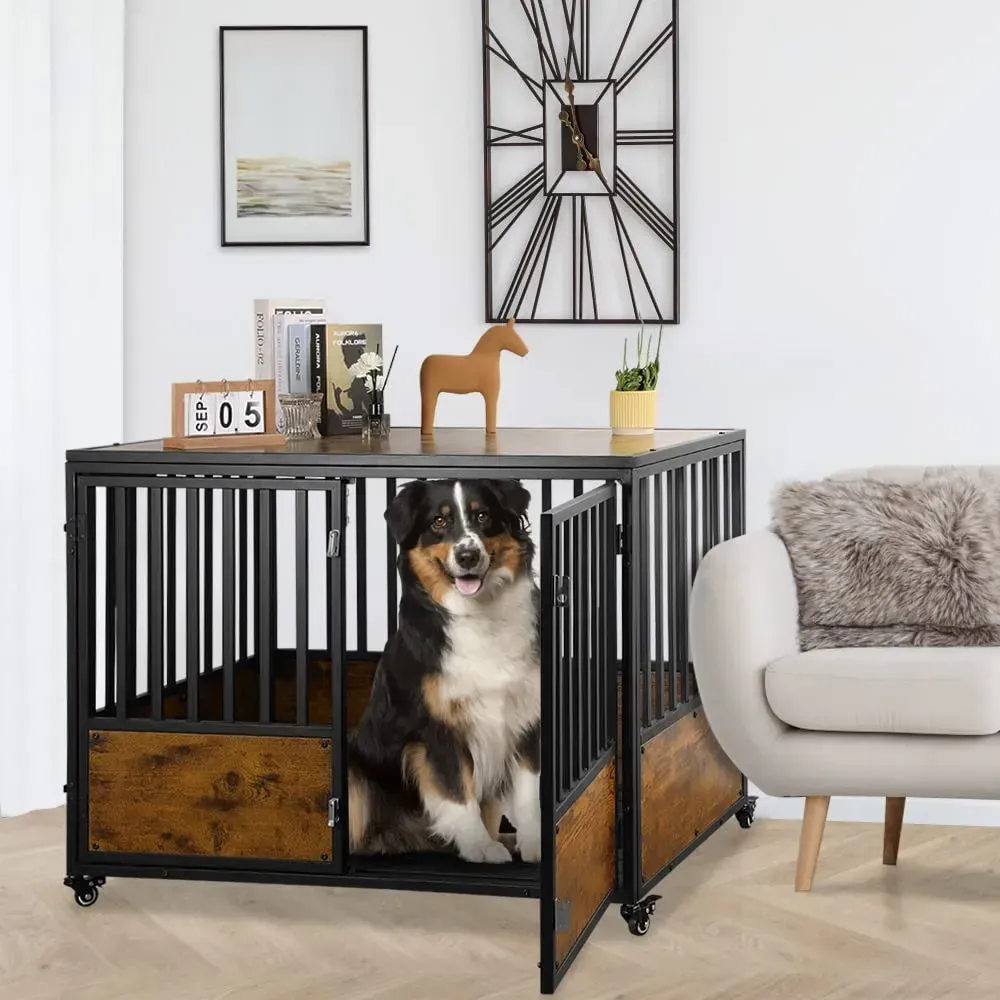Exploring Different Dog Crate Materials
Introduction:
Dog crates are essential for providing a safe and comfortable space for our furry friends. When choosing a dog crate, one important factor to consider is the material it is made of. The material can affect the crate's durability, ease of maintenance, and overall functionality. In this blog post, we will explore the various materials commonly used for dog crates and discuss their pros and cons.
1. Metal Dog Crates:
Metal crates, often made of steel or aluminum, are popular choices due to their strength and durability. They provide excellent ventilation and visibility, allowing dogs to see their surroundings. Metal crates are easy to clean and maintain, making them ideal for large dogs or dogs prone to accidents. However, they can be heavy and bulky, which may limit their portability. Of course, if you buy a metal dog cage with a universal wheel style, it will solve this shortcoming.
2. Plastic Dog Crates:
Plastic crates are lightweight, making them easy to transport. They are often used for travel or airline purposes. These crates provide a cozy and den-like environment, which can make dogs feel secure. Plastic crates are also relatively easy to clean, but they may not offer as much ventilation as metal crates. Additionally, some dogs may be able to chew through the plastic, so it's important to choose a high-quality, sturdy option.

3. Wooden Dog Crates :
Wooden crates are aesthetically pleasing and can blend well with home decor. They provide a cozy and warm atmosphere for dogs. Wooden crates are usually well-ventilated and offer good visibility. However, they may not be as durable as metal or plastic crates and can be prone to damage from chewing or scratching. They require regular maintenance to prevent moisture or odor absorption, and cleaning may be more challenging compared to other materials.This LUCKUP cage combines the advantages of a metal dog cage with a wooden dog cage, which is both strong and bite-resistant, and can be integrated into the furniture.
4. Fabric Dog Crates :
Fabric crates, often made with a combination of mesh and lightweight materials, are highly portable and easy to set up and fold down. They are great for traveling or as temporary crates. Fabric crates are lightweight and usually come with carrying handles. They provide good ventilation and are soft and comfortable for dogs. However, fabric crates may not be suitable for dogs who are prone to chewing or scratching, as they are not as durable as other materials. They may also be more challenging to clean, as some fabrics can absorb odors and stains.


Conclusion:
When choosing a dog crate, it's important to consider the specific needs of your dog and your lifestyle. Each material has its advantages and disadvantages. Metal crates offer durability but can be heavy, while plastic crates are lightweight but may lack ventilation. Wooden crates provide an aesthetically pleasing look but may require more maintenance. Fabric crates are highly portable but may not be suitable for dogs who chew or scratch. By understanding the characteristics of different materials, you can make an informed decision and provide a comfortable and secure space for your beloved pet.




